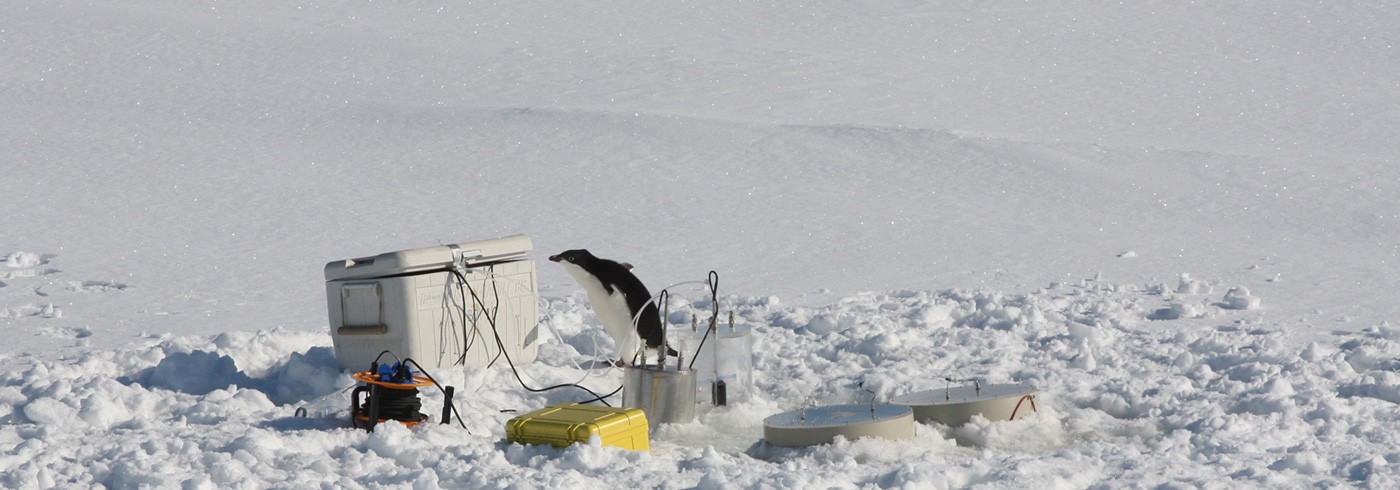Epidemic diseases in Antarctic and Arctic seals
26 November 2008 - 6 January 2009
A swift way to collect skin and blubber samples for analyses of genetics and contaminants is to take biopsies skiing. Here a crabeater seal is approached. Photo: Jonas Teilmann
This program explores processes involved in the evolution of disease resistance. Epidemiology and immunogenetics of canine distemper virus in the Antarctic seals are investigated parallel with phocine distemper virus in Arctic and North Sea seals. Mass mortalities caused by morbilliviruses have occurred in seal populations in both hemispheres over the past 55 years. A majority of crabeater seals in investigated areas in Antarctica died in the 1950s. Blood serum samples collected during the SWEDARP expedition in 1989 showed that the likely cause was a canine distemper virus (CDV), probably introduced by contact with sledge dogs at a time when vaccine was inefficient, and which seems to have circulated among crabeater seals and leopard seals ever since. Mass mortalities caused by phocine distemper virus (PDV) wiped out about 50% of European harbour seal populations in 1988 and 2002, and later studies showed that the infective agent is circulating among several species of Arctic seals, constituting a reservoir for the PDV.
The Antarctic seal project investigates the role of infectious diseases in the population dynamics of Antarctic seals, and the mechanisms involved in the evolution of disease resistance. Further tasks are to identify and analyse the epidemiology of other invasive infectious agents in the Antarctic biota and to investigate the fatty acid composition of blubber in all seal species, which gives information on the role of these species in the ecosystem.
Using an inflatable on open water and skis for transport on snow-covered ice, seals were caught when Oden was moored to large ice floes. All together 77 seals were sampled: 52 crabeater seals, 24 weddell seals and one Ross seal. Seals were approached slowly and captured after a short rush using pole nets. Contained by the nets, seals were held still for about 30 minutes without anaesthesia while samples were taken and then released (see video by participating teacher Jeff Peneston). Twenty additional samples from freeze dried crabeater seals were collected close to Lake Hoare field camp in Dry Valleys, Antarctica.
Hair samples have been analysed for mercury, and blubber samples for fatty acid profiles. These data are being compared with earlier collected material from seals from the northern hemisphere. Levels of mercury in various seal species indicate the trophic level at which they forage. Seals feeding on fish show considerably higher concentrations of mercury compared with seals that predominantly feed on krill. Fish feeders such as weddell seals (Antarctic) and bearded seals (Arctic) showed higher levels of mercury compared with crabeater seals (Antarctic) and ringed seals (Arctic). Virological investigations are ongoing in collaboration with a German lab.

